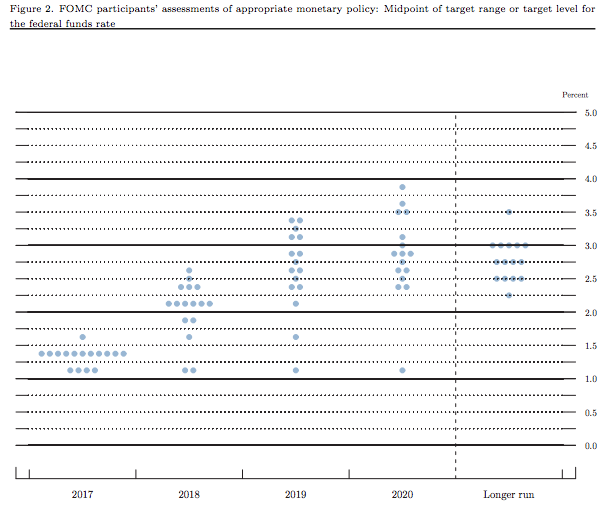Fed holds rates, sets date to unwind $4.5 trillion balance sheet
In a widely expected move, the Federal Reserve kept interest rates unchanged on Wednesday and announced a timeline for reducing its $4.5 trillion balance sheet.
After its two-day policy meeting, the Federal Open Market Committee unanimously voted to hold the federal funds rate between 1.00% and 1.25% and begin the process of shrinking its balance sheet by October.
At the June meeting, the Fed revealed plans to gradually reduce its $4.5 trillion balance sheet by decreasing its reinvestment of principal payments. Payments will only be reinvested when they exceed gradually rising caps, which start at $6 billion per month for Treasuries and $4 billion per month for agency debt and MBS.
Economic outlook
“Hurricanes Harvey, Irma, and Maria have devastated many communities, inflicting severe hardship,” the Fed wrote in its statement. “Storm-related disruptions and rebuilding will affect economic activity in the near term, but past experience suggests that the storms are unlikely to materially alter the course of the national economy over the medium term.”
The Fed’s cautious, yet generally positive, economic statement follows a slew of mixed data, including better-than-expected second quarter GDP and soft inflation numbers.
Unemployment has hovered just below 5% for the past year, a level many economists consider to be near full employment. The unemployment rate sank to 4.4% in August, near its lowest level in a decade, and non-farm payrolls grew by a less-than-expected 156,000.
“Job gains have remained solid in recent months, and the unemployment rate has stayed low.” the Fed wrote. “Household spending has been expanding at a moderate rate, and growth in business fixed investment has picked up in recent quarters.”
Meanwhile, recent inflation readings have continued to run below the Fed’s 2% target. The Fed’s preferred measure of price inflation, the core Personal Consumption Expenditures index, fell to 1.4% year-over-year in July, its lowest level in months. Another measure of inflation, the Consumer Price Index, grew slightly to 1.9% year-over-year in August.
The Fed noted that the recent hurricanes may also impact inflation in the short run.
“Higher prices for gasoline and some other items in the aftermath of the hurricanes will likely boost inflation temporarily; apart from that effect, inflation on a 12-month basis is expected to remain somewhat below 2 percent in the near term but to stabilize around the Committee’s 2 percent objective over the medium term,” the central bank wrote in its statement.
Fed projections and dot plots
Projections for the total number of expected rate hikes in 2017 remained unchanged with one more quarter-point raise this year. Officials also forecast three rate hikes in 2018, with the rate reaching 2.9% in 2020, just above its long-run goal of 2.8%.
The Fed’s expectations for GDP growth increased slightly to 2.4% in 2017, hitting the long-run goal of 1.8% by 2020. Meanwhile short-term forecasts for core PCE inflation fell to 1.5% this year, but officials predict it will rise to 2% by 2019.


 Yahoo Finance
Yahoo Finance 
